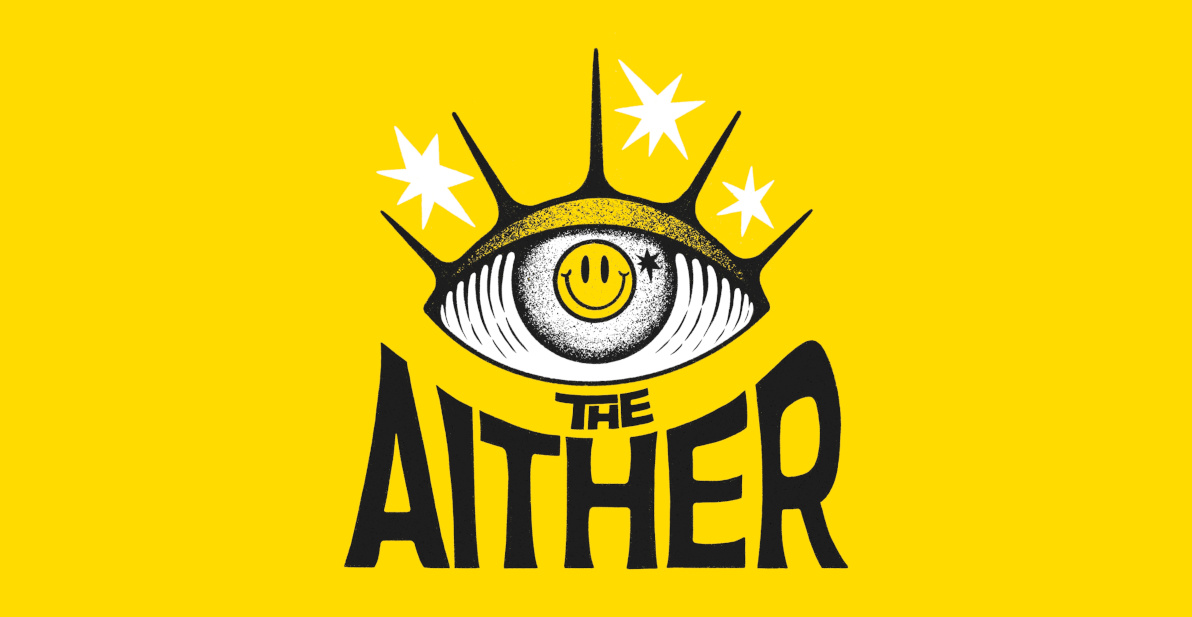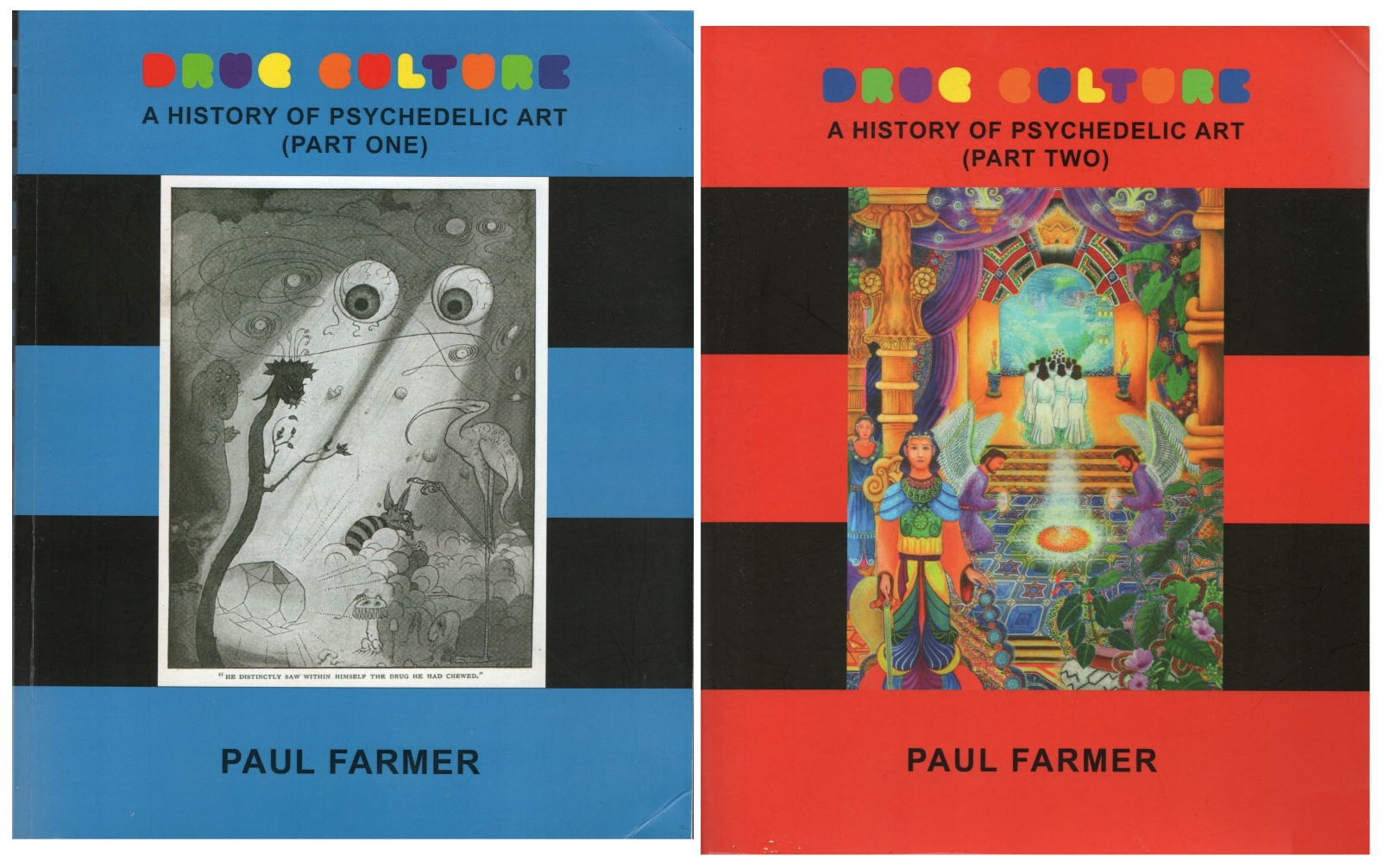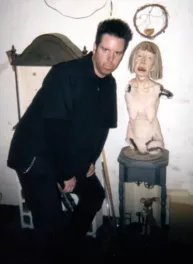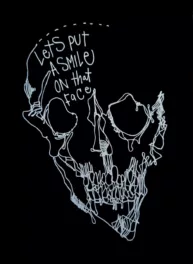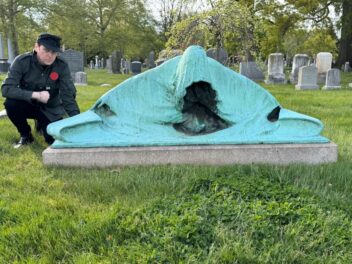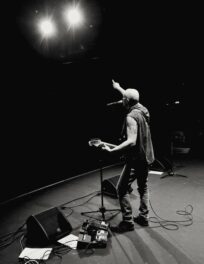Released in 2023 by Leamington Spa / Credibility Gap Publishing, Paul Farmer’s 2 volume book, ‘Drug Culture: A History of Psychedelic Art’ – is clearly a project of great passion.
The author and curator is somewhat of an elusive figure, who I meet by chance. With Paul later kindly sending me both volumes as a courtesy because, surprisingly to me at least, I am included in Vol 2.
I see ‘Drug Culture: A History of Psychedelic Art’ as a singular piece of art in and of itself. Something rare in any art book. It is beautifully produced and well researched – A wonderful history told in an engaging manner from someone with a unique mind and way of looking at things.
I recently interviewed Paul over email to learn more about him and ‘Drug Culture: A History of Psychedelic Art.’
Paul didn’t want me to note too much of his personal biography, or include any photographs of him. Nor does he have any active social media, or want to share his email – So I drew a portrait of Paul instead.
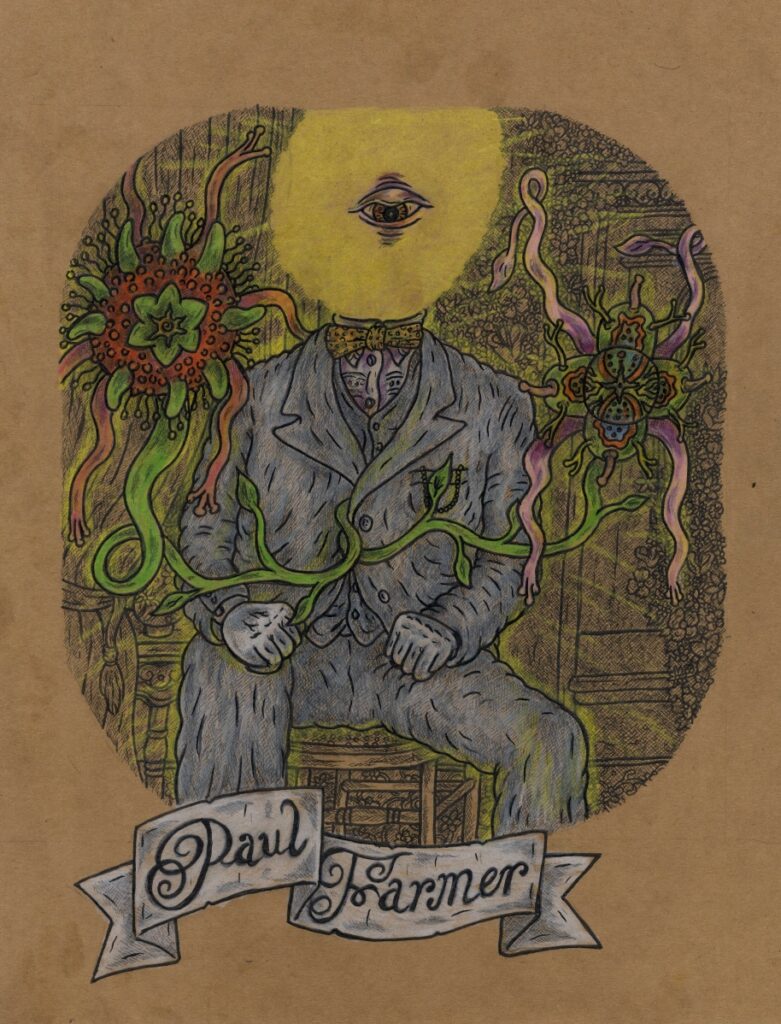
I’m very grateful that Paul took the time to answer my questions, and I hope other people enjoy reading our discussion – and of course, I highly recommend purchasing (or hassling your local library to purchase) both volumes!
Take a read, below…
Where were you born, can you share a little about your early life?
I grew up in a Tudor miller’s house on the banks of the river Avon.
My childhood was similar in a way to Laurie Lee’s ‘Cider with Rosie’ book; and Dennis Potter’s ‘Blue Remembered Hills’ episode from the Play for Today series – Potter’s teleplay captures and recalls things I’d forgotten about childhood, it’s uncanny, and recommended viewing.
My childhood was superficially idyllic but not really very pleasant at all.
Whose childhood is?
What led you to be attracted to the subject of Psychedelic Art, as it is quite niche?
Originally, I thought of it as a good commercial prospect, niche yes, but also a gap in the market. I have been interested in psych art for a long time.
Personally, I cannot think of a more interesting subject.
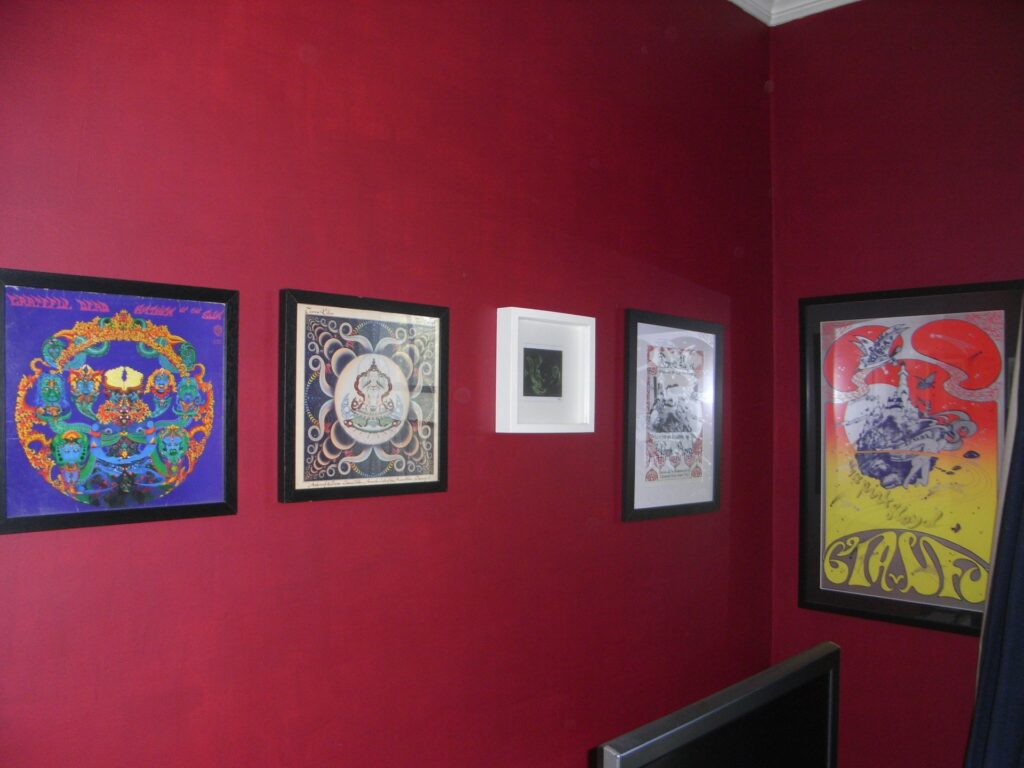
The books, as objects themselves, are beautiful!
Do you like books and comics as objects?
I’m a bit of a connoisseur of so-called coffee-table books.
The format was very important.
A lot of coffee-table books are too big and unwieldy to read comfortably. I chose the size deliberately to be easy to hold and read.
I was inspired by the Thames & Hudson ‘Art and Imagination’ series and stole the book’s dimensions from Taschen.
I love to pore over art books staring at the pictures for hours. There is no substitute for close looking.
My books are designed to be looked at intensively.
I do love comics as well as books, I’m a visual person. Definitely post-literate.
When I was 14 I’d only read about 6 novels!
I can relate an autobiography entirely in terms of the comics I’ve read:
I started when young with ‘Donald & Mickey’, this was Disney (hmm!) but I loved Goofy and the graphic version of ‘Bedknobs and Broomsticks.’
Being the UK in the 1970s there were disruptions to the supply. Strikes meant there were episodes missing. I know some people made up their own stories to fill in the missing parts, but I didn’t do that, I was obsessed with images not narratives.
Having seen the film ‘Bedknobs and Broomsticks’ recently; it’s my theory that it is a fictionalised account of the relationship between Aleister Crowley and Dion Fortune (tee hee). With the David Tomlinson character a bumbling con-man whereas Angela Lansbury’s character is a genuine witch.
This episode in history, with Dion Fortune’s collective of English Witches has emerged into comics with ‘The Witches of WWII’ in 2023.
A lot of Dion Fortune’s archive was destroyed but I’d like to see her posthumous reputation rise and AC’s decline.
I graduated onto war comics and was a WWII obsessive. Toy guns, war films and Airfix model kits bounded our world.
I read ‘Warlord’, ‘Battle’, and then the controversial ‘Action’ with its violence and horror (Hookjaw and Spinball) which for some reason was considered worse than all those war comics(?).
Then I read ‘Battle/Action’ when they merged – Joe Colquhoun’s Charley’s War and Johnny Red made me want to be a comics artist.
Next in this autobiography in comics was ‘2000AD,’ which was and still is great.
At 14 I read ‘Lord of the Rings’, saw ‘Empire Strikes Back’ and became a Fantasy/Sci-Fi nut, drawing wizards and hobbits – inspired by Jimmy Cauty’s ‘Athena’ posters – and designed star trooper uniforms. There was a TV documentary on Joseph Campbell’s mono-myth which blew my mind.
I also got into ‘Epic’ (comic compendium) around this time, which introduced me to writers as various as Timothy Leary and Franz Kafka.
My life changed at 16 and I dropped the fantasy obsession and shifted from reading Michael Moorcock and Robert E Howard to Samuel Beckett and Philip K Dick. Firstly, ‘Bladerunner’ and then ‘The Transmigration of Timothy Archer’ and ‘Valis.’ I became a big PKD fan.
Samuel Beckett was a modernist. His work was a clear break from the past.
At the time this kind of “creation out of nothing” seemed to have a parallel in post-punk music such as Joy Division and The Fall.
While all this was going on I was quietly an afficionado of Syd Barrett and other English pastoral music found on the LPs of Julian Cope and Nick Drake.
I was reading ‘Freak Brothers’ and Robert Crumb in comics but was energised by ‘Watchmen.’ Never been much of a fan of Marvel and DC but did buy into the Vertigo Universe a fair bit.
I was doing comics in that vein, written by a talented friend of mine but found I didn’t have the stamina to bring them to fruition.
I did though complete my green book – The cover of which was influenced by Wyndham Lewis’ ‘Blast‘ Magazine (1914).
I decided to go to College (Polytechnic) and write coffee-table books.
London at the time meant comic shops and I got quite a collection of ‘Weirdo.’ This introduced me to Kim Deitch, Julie Doucet, Aline Kominsky-Crumb, and numerous others.
Also available in London was your comic anthology, ‘Watermelon.’ I collaborated with another friend on some strips to submit but unfortunately destroyed them when I came out of the Mental Hospital.
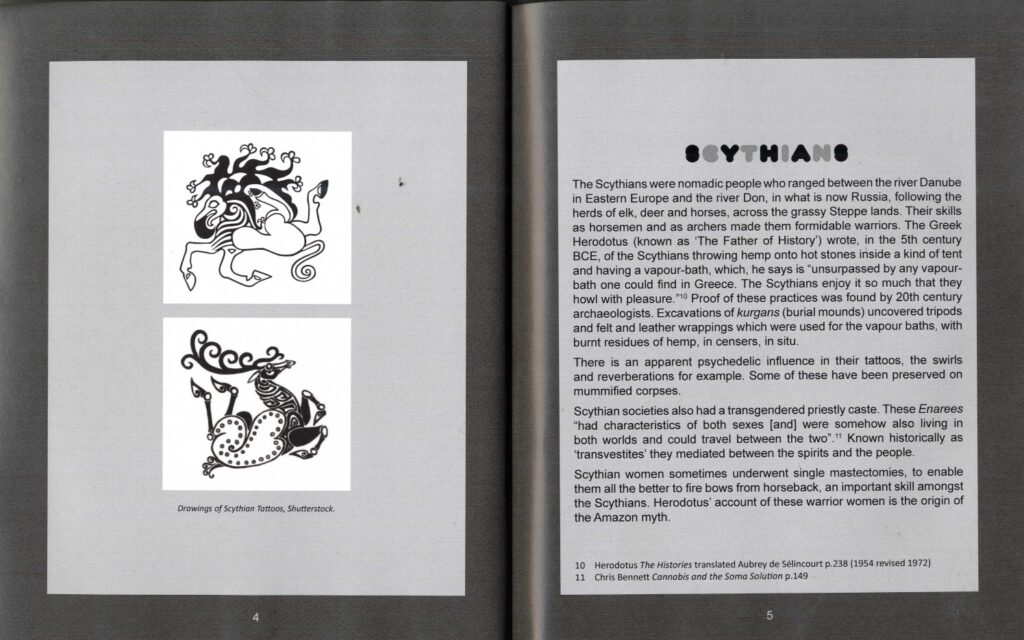

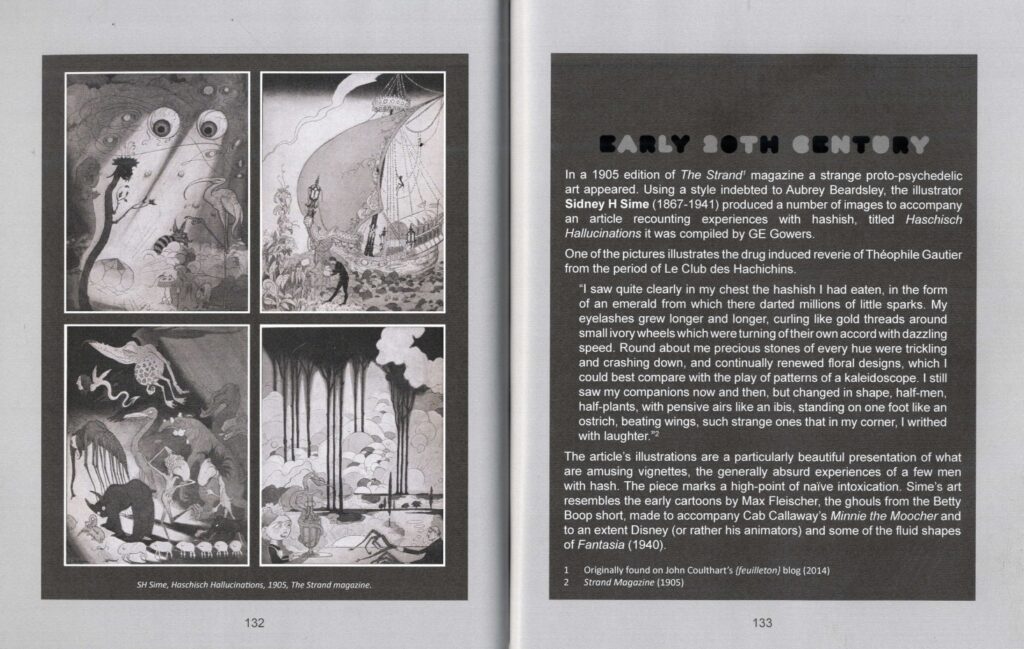
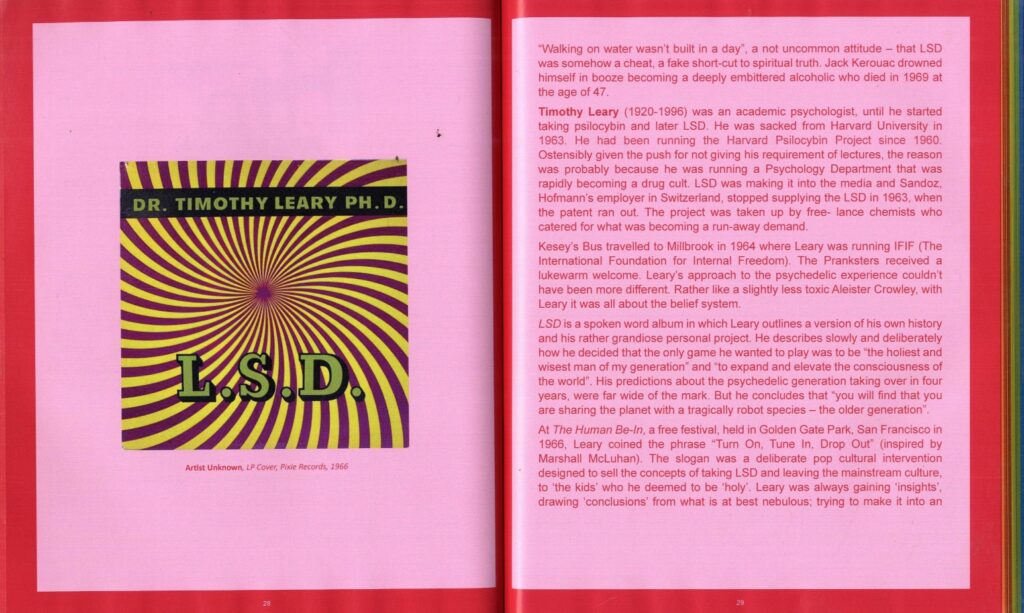
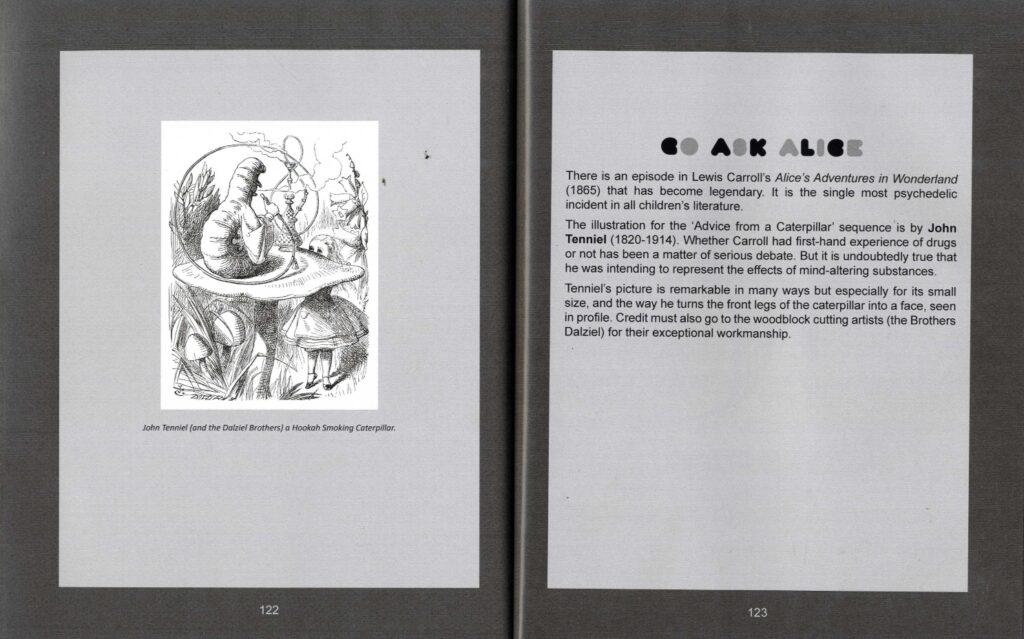
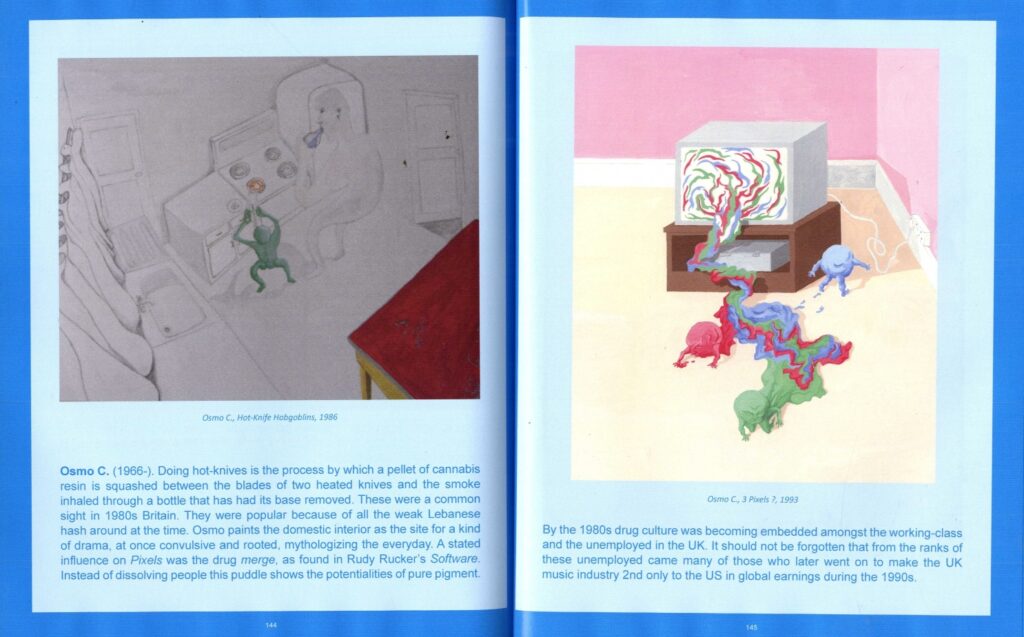
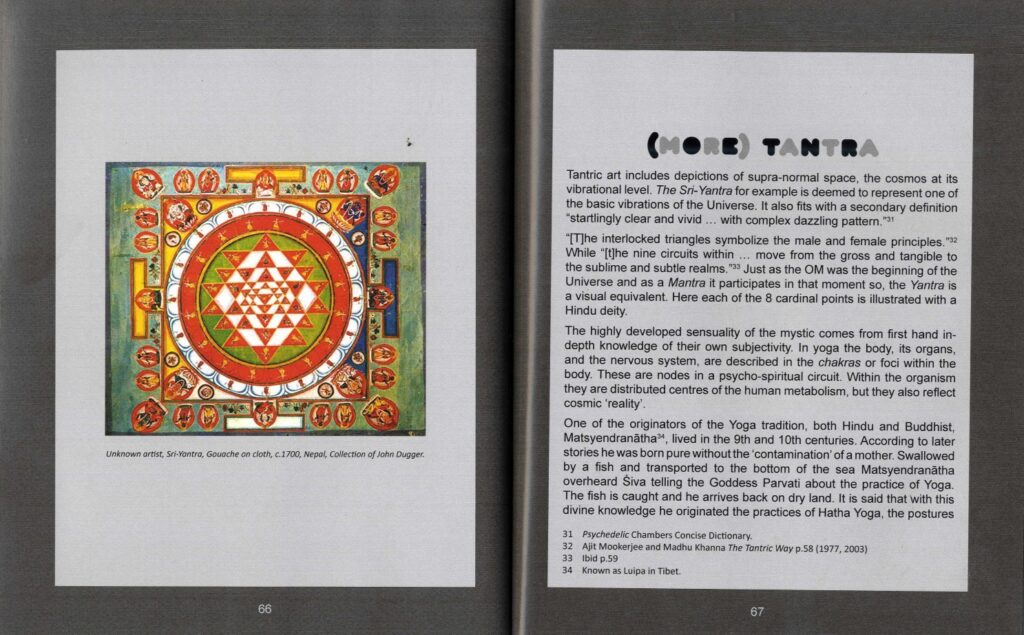
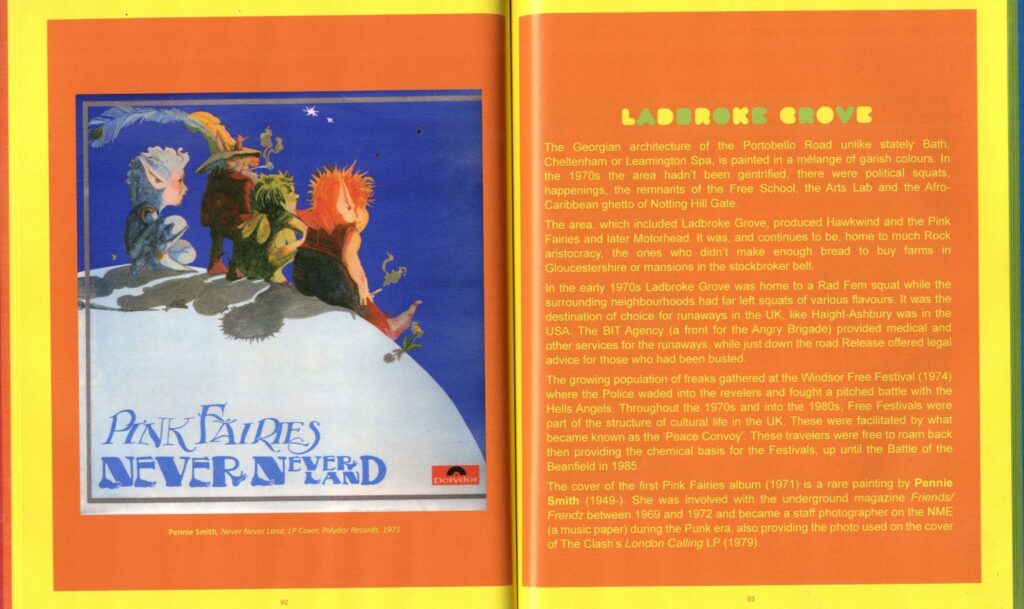
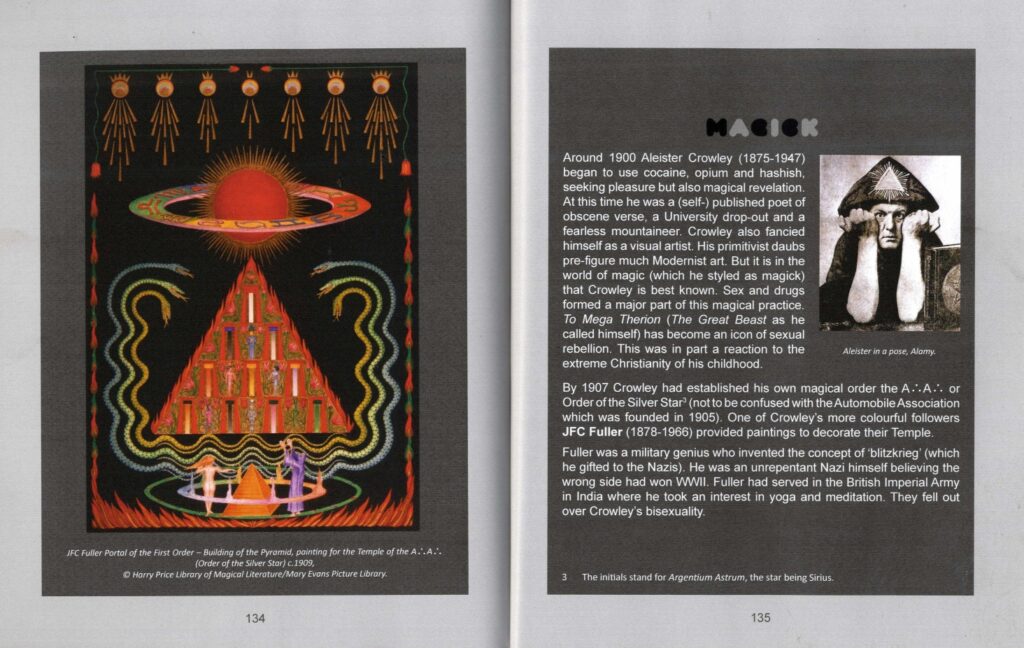
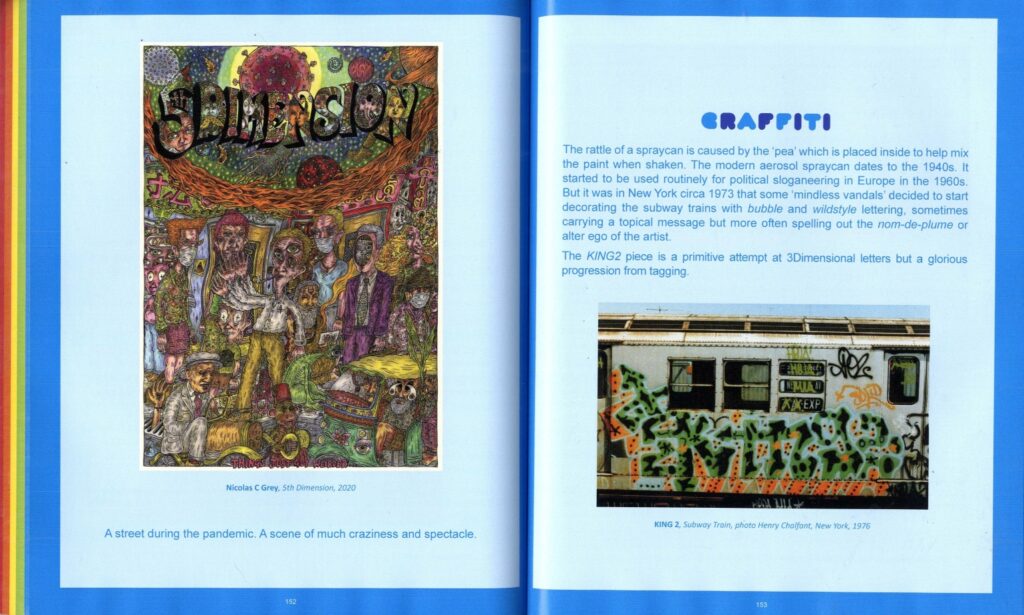
Do you have any thoughts on the emergence of AI art and writing?
I have a very personal relationship with AI.
I was working on my dissertation on AI in film (‘Monstrous Technology’) when I developed schizophrenia. In 1992 there were only about 20 films that had dealt with the subject – a few more with robots. So, it was quite a manageable subject.
I was witness to the becoming conscious of a world-mind – I must have got the idea from Teilhard de Chardin via Marshall McLuhan. I was in telepathic contact with it as it transformed the world.
I was reading things like ‘Capitalism & Schizophrenia’ by Deleuze and Guattari and was completely out of my depth. Ended up getting into trouble and sectioned – After up-loading my consciousness to a planet in the Sirius system (tee hee).
You have already touched upon it; and I know it may be a sensitive subject, but having struggled with your mental health – How does this manifest for you, and how do you deal with it on a day-to-day basis?
I lost more than a decade to it.
I am not a well man.
I have regular injections of medication and am on pills. I need these.
I attend a weekly Art & Wellbeing group at a local community centre, it’s very therapeutic – I’m creating illustrations for Clark Ashton Smith’s ‘The Hashish Eater: An Apocalypse Of Evil.’ I started in 2018 and thought I’d have them finished by the centenary in 2020.
I’m currently on page 5 (of 25)!
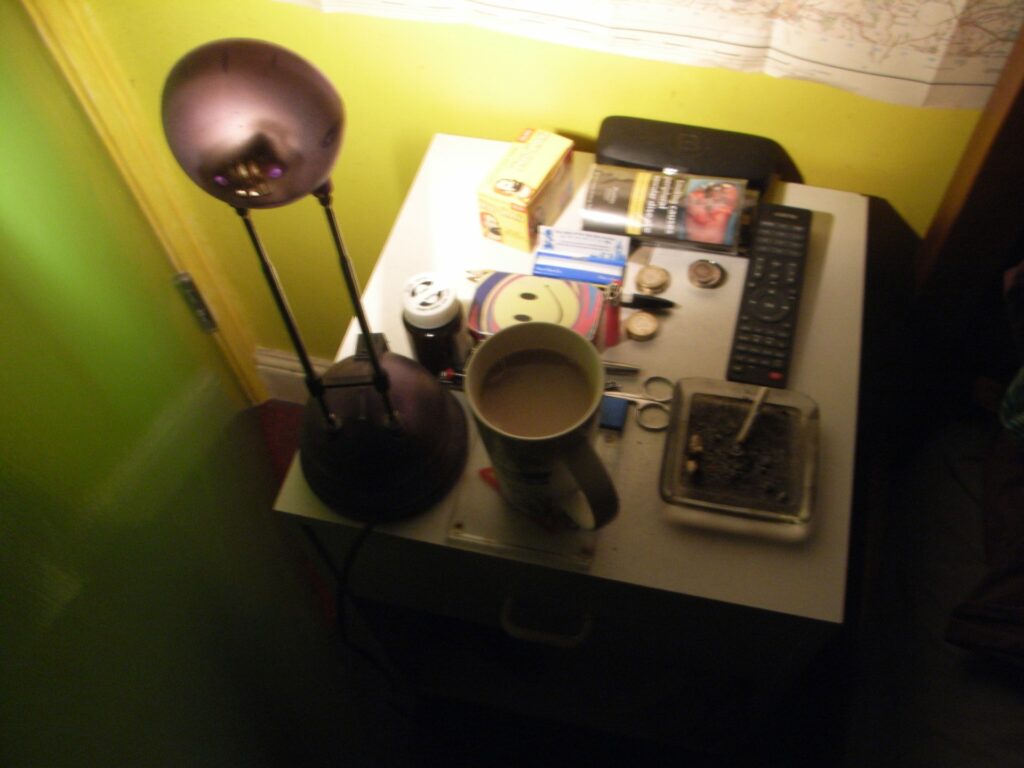
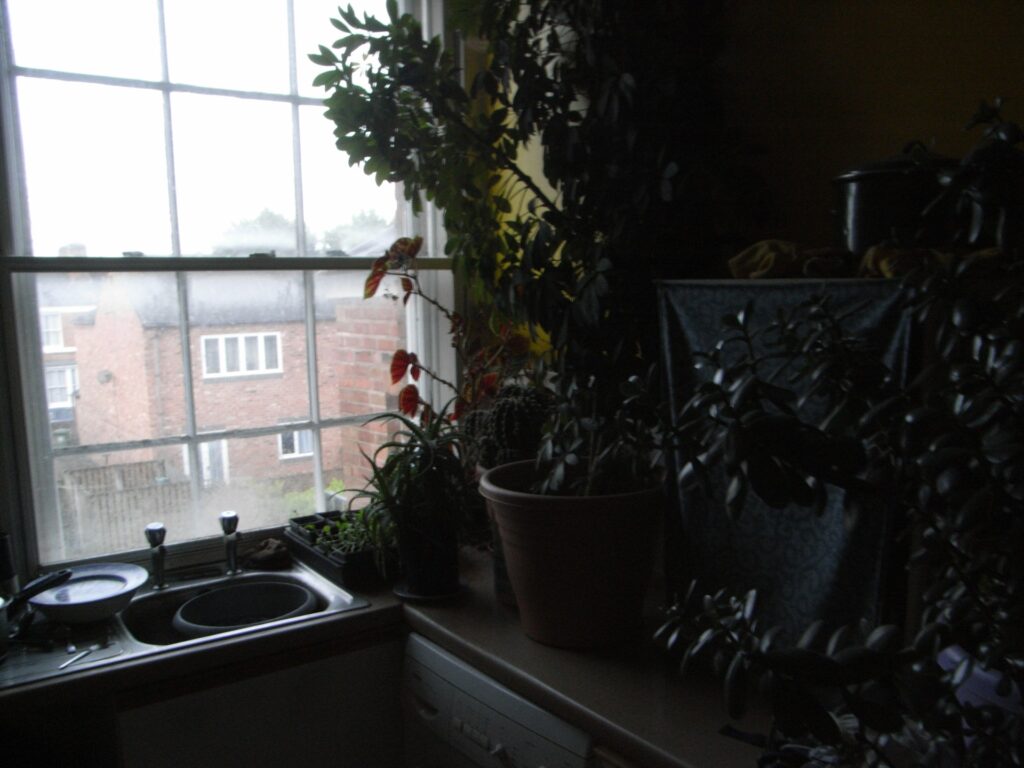
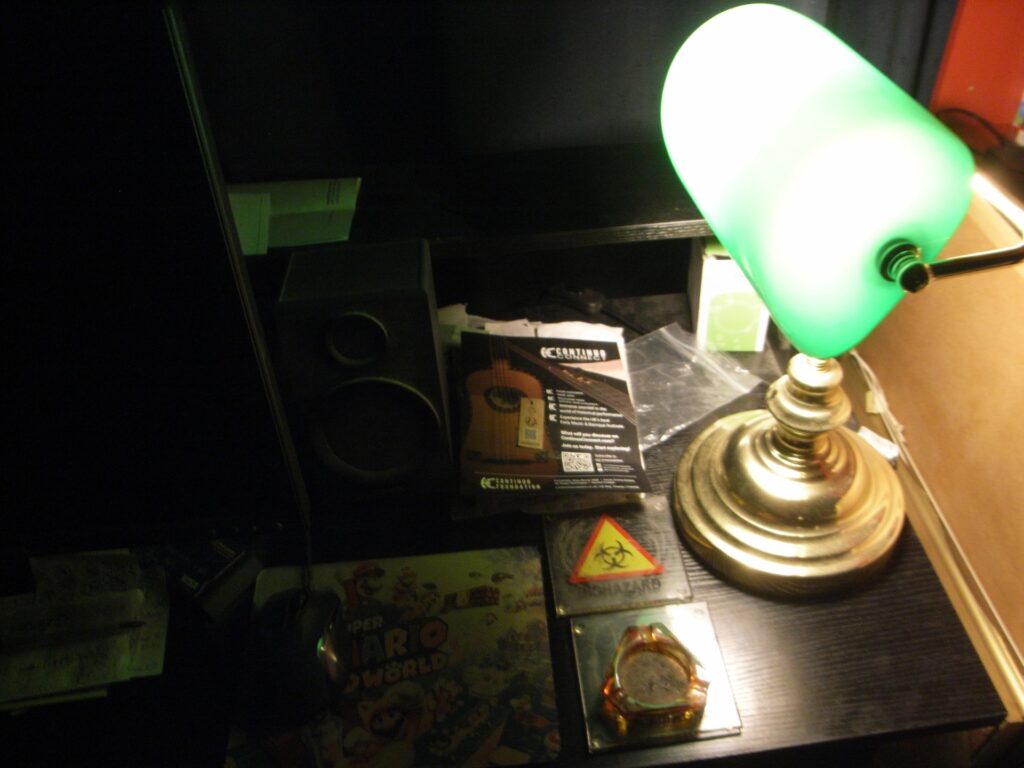
I learnt a great deal from your books, the amount of research, the connections you made, was wonderful, and something rare.
What resources did you use to help you with your research?
Thanks Nic, that’s really kind.
I refer you to Shelfie #1 and #2. These are just some of my books.
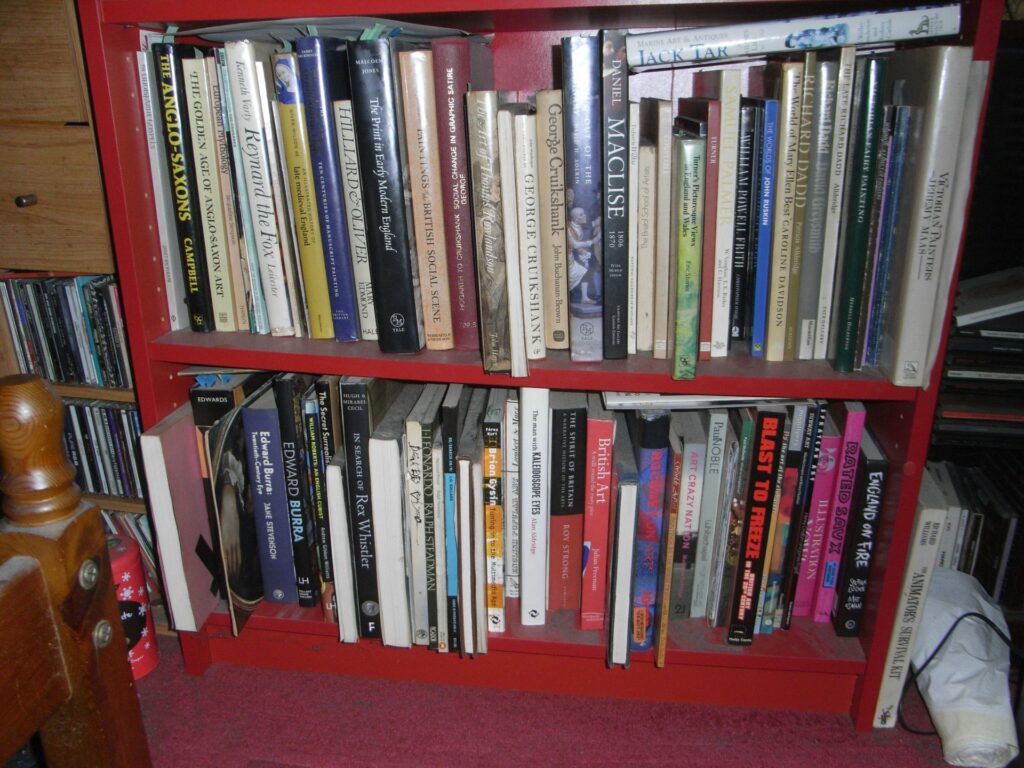
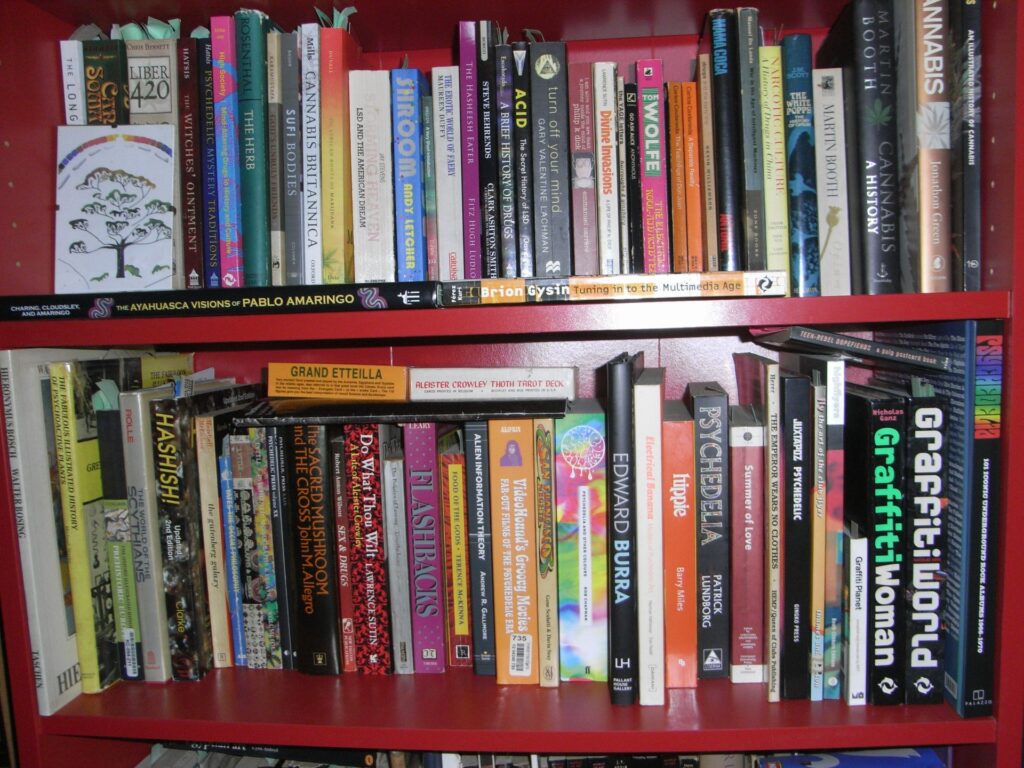
Links
- ‘Drug Culture: A History of Psychedelic Art’ – Link to Buy Both Volumes via Ebay UK Seller pafar-1687
- ‘Drug Culture: A History of Psychedelic Art Vol. 1’ – 2024 Review via Psychedelic Press
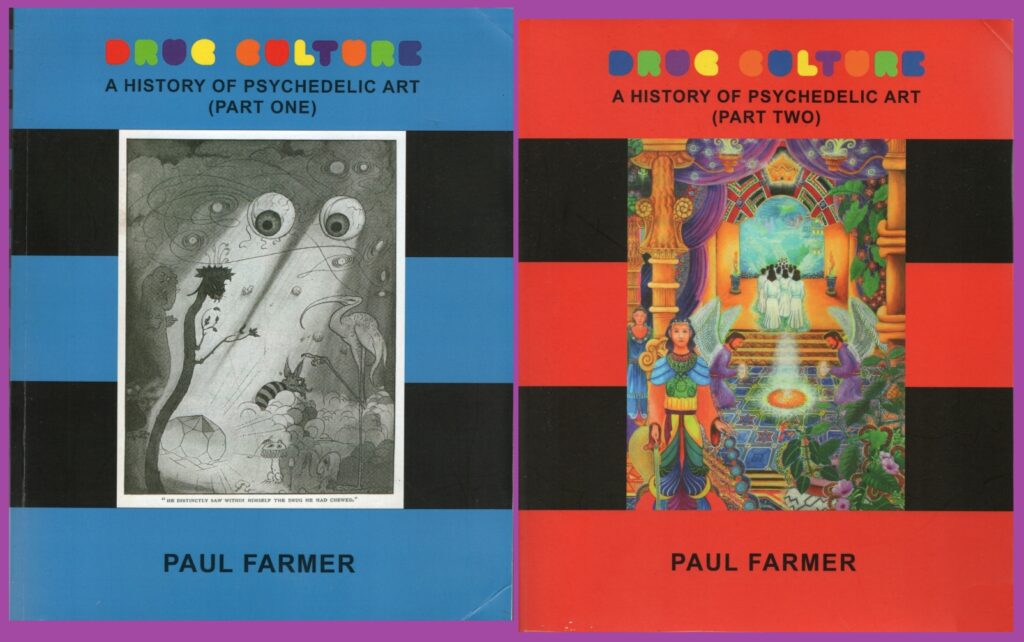
All images supplied by Nicolas and Paul.
